A sign prohibiting a stop is not so rare. Perhaps every driver is familiar with him. But not everyone understands exactly how it acts, for how long, and also what punishment will be for a committed violation related to the pointer. In addition, do not forget that most signs have certain clarifications. They will have to learn and remember. Otherwise, you can run into trouble and punishment. What does a stop sign look like? This and not only can be found further.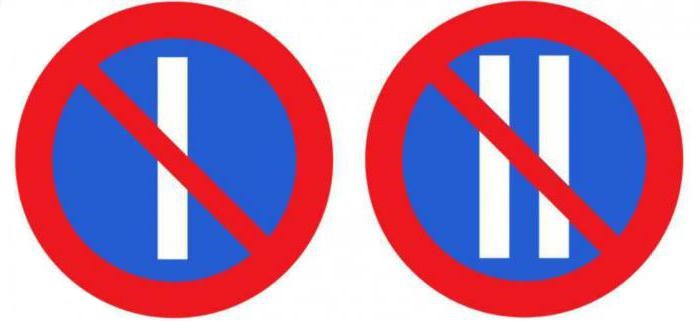
Some terminology
Where to start? For example, you can and even need to clearly understand that in traffic rules means such a thing as a stop. There are two terms. The first is a stop, the second is a parking. They play an important role in traffic regulations.
If the driver deliberately stopped his vehicle for less than 5 minutes with the purpose of disembarking (or boarding) the passengers, as well as for loading something into the car, this is considered a stop. Sometimes you can stop for more than the specified period. But only in rare exceptions when the situation really requires it.
But an intentional stop of a car or any other transport for more than 5 minutes without the goal of working with passengers or cargo is called parking. It is easy to get confused in these concepts. But you have to feel the difference. After all, the sign prohibiting stopping is different from the ban on parking. What exactly?
"No parking"
What signs prohibit stopping? This remains to be seen. Just first, pay attention to the signs of the prohibition of parking. How do they look? And what features do they have?
“No parking” is a sign that represents a circle painted in blue inside. Around the painted area there is a red border. And the circle is crossed out with one diagonal line. In the direction from left to right. Nothing hard day understanding, right?
The main feature of this sign is that it does not prohibit stopping. That is, for a short period of time, you can pause the movement. But for a long period - no. He has the same coverage area as the sign that prohibits stopping.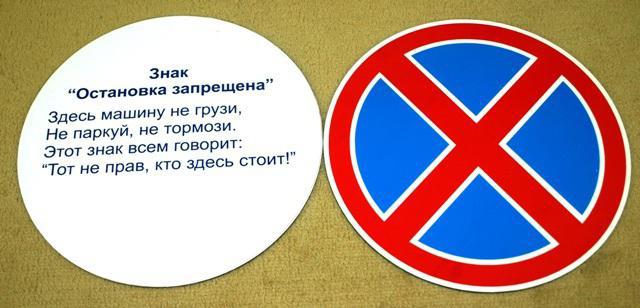
Stop prohibition
But how exactly does he look? With the first sign, limiting the pause, we have already met. How on the roads can one distinguish and recognize the road sign "Stop is prohibited"?
By himself, he represents the same shaded blue circle with a red edging. But unlike the previous sign, now the strikethrough of the circle will be X. Two red lines in different directions. Also extremely easy to understand. The main thing is not to get confused.
What distinguishes the sign "Stop and parking is prohibited"? The fact that he does not allow, in principle, to take a break in the movement of the vehicle. If the "Parking is prohibited" gives drivers the opportunity to make short breaks, then the prohibition of stopping - no. Remember this, so as not to bring misfortune in the form of punishment once again.
How does it work
The road sign "Stop is prohibited" has its own restrictions on actions. For example, you should pay attention: it works only on the side of the road where it is installed. That is, if you needed to stop somewhere, but you saw a prohibition sign, you can do it from the opposite side.
Typically, the action of the pointer is also accompanied by a yellow frame on the sidewalk or road. A strip that is clearly visible to the driver. It is worth paying attention to. And consider if you needed a stop.
Not everyone understands when and in what places you can pause on the road when driving. The sign "Stop is prohibited" (in the same way as "Parking is prohibited") has, as already mentioned, its own coverage area. If there are no clarifications, then the restrictions apply to the nearest intersection. Before him, the rule will work in full force.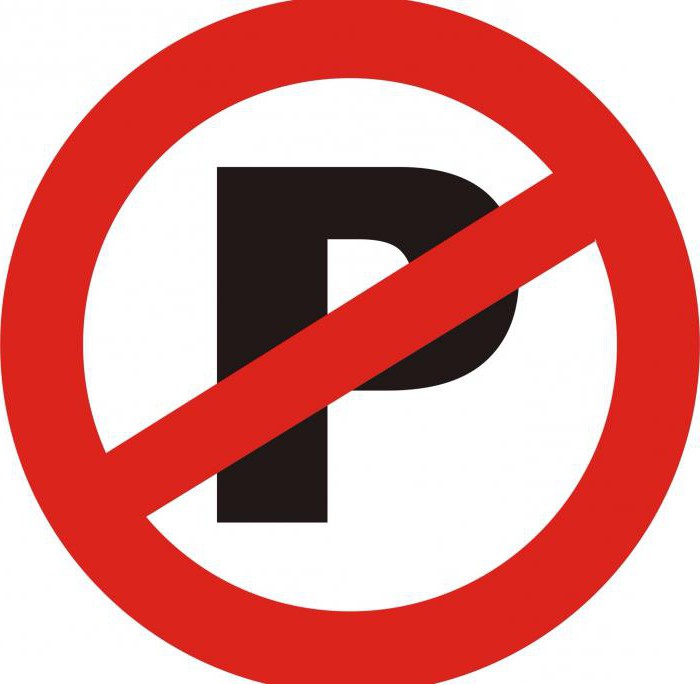
Without intersections
But what about situations when there are no road intersections behind the signs? How to be in this position for drivers? Only one thing can be said here: the “Stop is prohibited” sign, the coverage area of which is not limited to intersections (turns are not taken into account), will “haunt” the motorist until the end of the village.
Here is an interesting action for the rule. It turns out that the sign prohibiting the stop, or does not allow it to be done to the nearest intersection, or to the end of the city borders (villages and so on). But there are some limitations. And they are very common.
Arrow to down
Pay attention to the so-called qualifying signs. They are usually located under the main ones and are depicted on a white background. The stop sign with an arrow is not uncommon on modern roads. Depending on the position thereof, it is possible to judge the zone of effect of the restriction.
If you meet the sign “Stop is prohibited” (sign) on the road, while the arrow looks down, you can judge the end of the rule. In other words, restrictions on stopping and parking will apply to the section from the pointer to the side opposite to the movement of your transport. Behind this column, if there are no other restrictions, you can safely stop and park. Of course, if this does not contradict other traffic rules.
Double arrow
The sign "Stop and parking is prohibited" may have a double arrow as a clarification. What it is? How to understand her? No need to be scared - everything is not as complicated as it might seem at first glance.
A double arrow with up and down directions at the same time is proof that you are still in the range of the restriction. It doesn’t matter with which sign it is combined. The fact remains.
Did you see the “Stop is prohibited” sign, and under it a black arrow on a white background in the up and down direction? Know: before and after the pillar you cannot park and stop. The action ends either at the corresponding sign, or after the intersection, or at the very end of the village.
By time
According to the traffic rules, the “Stop is prohibited” sign has another very interesting feature. To be more precise, this is a clarification of the prohibitions. The area of action is now understandable. One down arrow is the end of the rule's work, double - being in the coverage area. But that is not all.
Often, under the signs you can see an up arrow, and under it - a time interval or a certain number of meters. This clarification indicates a specific coverage area and the time when restrictions apply. So, for example, if you saw the “Stop is prohibited” sign with an up arrow and there is an inscription with a meter under it, this means that the driver has no right to stop or park behind the sign for the indicated meters.
In the case when there is a certain time under the main indicator, it must be taken into account that at the indicated intervals the rule works in full force. And in other periods, you can safely park and stop at one or another section, if this does not contradict other traffic rules.
Even odd
You can often see that on our sign today there is also a white "brick" inside in an upright position. Or several of them (namely two). They are crossed out. These are also quite important points worth knowing about. Although most often this kind of phenomenon is found with the sign "Parking is prohibited."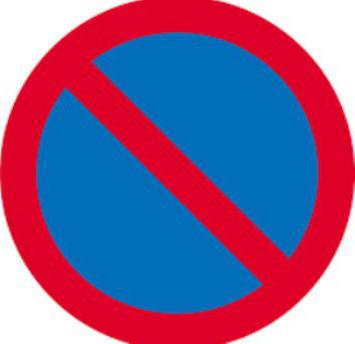
In any case, if you saw one vertical “brick” inside the prohibitory pointer, this means that the action extends to the odd numbers of the month.And with two - even even, respectively. The rest of the time, if there are no other specifications, you can avoid the penalty for parking or stopping.
Minor punishment
We figured out the rules a bit. Well, what about the violation of the signs? What awaits the offending driver for stopping in the wrong place? It’s pretty hard to answer exactly. After all, a lot of factors are taken into account.
The smallest punishment that awaits you is a verbal warning and the payment of a small fine. At the moment, it is about 500 rubles. Occasionally, a driver may simply be warned of a violation and asked to correct the situation. But such cases are rare. Most often, one has to deal with more serious situations.
Traffic obstruction
Often parking in the wrong place interferes with traffic. And here begins the designation "Stop is prohibited" (sign). The penalty for this violation increases several times. But not yet enough to panic.
According to the law, if you parked or stopped where you can’t, you will have to pay a fine of 2,000 rubles. Also, the vehicle is evacuated to a special parking lot. From there it will need to be redeemed. The amount of payment varies from region to region. Count on a few thousand rubles.
Federal significance
If you risked breaking the rules in cities of federal significance, then the situation will be even more serious. You probably will not be deprived of a vehicle, but a fine cannot be avoided in any case.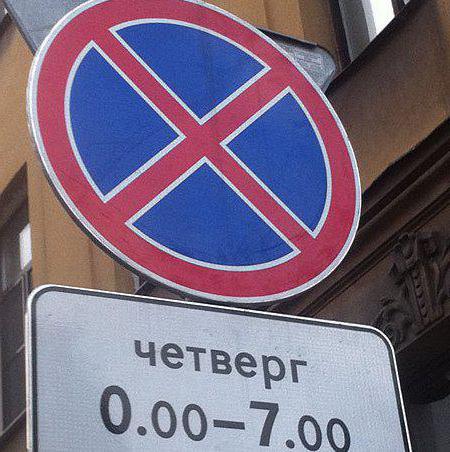
In areas of federal significance, it is 3,000 rubles. Sometimes the fine rises to 5000. As has been said more than once, it all depends on the specific situation. Practice shows that you can usually get by with a standard payment of 3 thousand and receive an oral warning.
Special places
In parking lots, there are also certain violations. But not as often as on the roads. Here, oddly enough, the sign prohibiting stopping will be absent. But the punishment for violations - no.
If the driver has decided to park in a place intended for disabled people or vehicles transporting people with disabilities, you can get off with a fine of 5000. There can be no warnings and exceptions. You will also have to immediately fix the offense.
In some cases, the driver runs the risk of being left without a license for several months. The average confiscation period is about 4 months. Or, they’ll simply take the vehicle from you and place you in a parking lot. After paying the fine, you will need to redeem the car in order to be able to ride it again. It turns out that you do not always need a sign prohibiting a stop in order to run into the appropriate punishment.
Pedestrians and paths
The last two situations that have been common recently on roads are stopping at pedestrian crossings (or near them), as well as at tram (rail) tracks. All this is also punished.
If the driver had the imprudence to stop near a pedestrian crossing (closer than five meters) and was caught by law enforcement officers, he will be fined 1,000 rubles. For a similar violation, but on transport routes (rail, tram), a fee of 1,500 rubles is due. In this case, you do not have the right to confiscate a car or rights. But to reprimand and warning - completely.
Do not abuse the violations. Frequent repetition of them can at one point deprive you of a driver’s license and vehicle for a long time. Therefore, it is better to know where you can stop and where not. This is the only way to protect yourself from unnecessary problems. Pay attention to the signs installed on the roads, as well as clarifications under them. They can help out in a hopeless situation. Remain a law-abiding citizen, and then no punishment will be scary to you.Having trouble remembering all the rules? Carry a CAO and a driver's note with you. They will remind you of violations, the meaning of signs, as well as the rules of conduct on the road.
